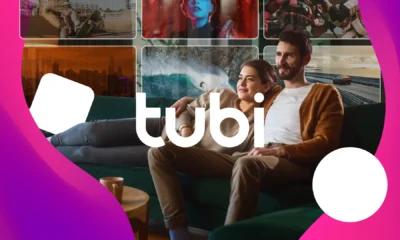Virtual events weren’t born of COVID-19, but their development and evolution were dramatically accelerated by the pandemic.
It’s indisputable that virtual events are as varied in format as their physical world counterparts. In purpose, composition, duration, presentation technology, virtual events are as wide-ranging as the organizations who are pioneering this medium.
This guide is for marketers who are looking to build their sales pipelines, acquire customers and retain existing customers with virtual events. Here’s what’s inside:
Estimated reading time: 17 minutes
What is a “virtual event”?
The definition of “virtual events” is evolving rapidly. For this guide, we’ve defined them as live and/or recorded presentations, typically organized by topic or subject. This guide focuses on virtual events produced for business purposes, including building sales pipelines, acquiring customers and retaining existing customers
Content may be presented live or may be recorded. Often it is available for live on-demand after it premieres live or recorded. Virtual events typically require attendees to either pay for access or provide their personal information in lieu of payment.
Most virtual events feature more than one presentation. Webinars, which have been produced since the 1990s, are one variety of virtual event. Typically they feature one presentation.
In addition, 1-to-1 meetings arranged between vendors and participants may be offered as a component of virtual events or may be the entirety of the programming.
Virtual events also typically feature networking opportunities for attendees and participating exhibitors/sponsors. These activities include audience polling, chat, Q&A, along with elements intended to entertain the audience like group yoga, bartending, DJ/music events, and virtual swag and meals delivered to the attendee’s location. Much more on networking is here.
Virtual event history
The development of virtual events began in the mid-1990s with several software applications that enable users to share their screens.
PictureTel introduced LiveShare Plus software, an application that provided users with remote access to another computer. In 1996, Microsoft introduced NetMeeting, which enabled users to communicate and exchange data in real-time.
Xerox released the first webinar software, PlaceWare, later that year. PlaceWare allowed users to create presentations that many others could attend. PlaceWare also included several features that are staples of webinars today, including audience polling, private chat, and the ability to elevate a webinar attendee to a presenter.
Webinar platforms proliferated at the end of the 1990s. Notable platforms debuting then included Cisco’s WebEx Meeting Center, GoToMeeting and On24.
For more on the history of virtual events, visit this page.
COVID, changes in customer behavior accelerated virtual event development
COVID accelerated the pace of virtual event development as prospective attendees sought alternative professional development opportunities and ways to stay connected with their professional community. Solutions providers, precluded from participating in live events, sought alternative ways to identify prospects.
Virtual event/webinar platform provider On24, which is publicly traded, illustrates the growth COVID-19 spurred. The company added nearly 600 customers in 2020, compared to just 150 in 2019. Its revenue grew 76% in 2020, compared to just 8% in 2019.
On24 Growth, 2018 to 2020
| 2020 | 2019 | 2018 | |
| Customers | 1994 | 1401 | 1241 |
| Sales ($ millions) | $156.90 | $89.10 | $67.80 |
Source: Martech analysis of On24 earnings reports
Changes in the sales dynamic, particularly the B2B environment, also accelerated the adoption of virtual events.
Customers are educating themselves before contacting company salespeople. That means offering access to information about products and services online is essential in this environment.
In addition, virtual event platforms and technology stacks cost-effectively facilitate customer engagement at scale, engaging large numbers of prospective customers and customers.
The cost of participating in virtual events, in addition to producing them, is typically a fraction of the cost of participating in an in-person event.
Virtual events are a viable alternative to in-person and popular with attendees
Interest in virtual events is likely to remain high, as the timeline for a return to in-person events remains uncertain. Marketers are reluctant to attend large gatherings. Nearly 50% said they won’t attend an in-person event through the first half of 2022, according to MarTech’s Event Participation Index, which measures marketers’ attitudes toward attending in-person and virtual events.
Half of Marketers Expect to Attend an In-person Event in 2021

Meanwhile, virtual event participation — and satisfaction with them — is high. Eighty-one percent of marketers responding to the Event Participation Index survey said they attended a virtual event in the last three months, and three-quarters said they were satisfied with the experience. (Editor’s note: Respondents were marketers who self-selected to participate in this survey. Results for other industries and populations may be different.)
Marketers attend/are satisfied with virtual events

Three in four marketers said they were satisfied with the virtual event experience. Factors contributing to the high degree of satisfaction included:
- Risk of infection is not a concern
- Most virtual events are free or relatively inexpensive, compared to in-person events, to attend
- Travel — and the associated expense and investment in time — is not required
- Participants can engage with virtual event content at their own pace, provided live sessions are available on-demand
While 100% satisfaction will remain an aspiration, there’s room for improvement rooted in the disconnect between what the medium is able to deliver and what attendees expect.
Virtual events are NOT physical events
Virtual events provide an experience that’s different from physical events — for attendees and exhibitors/sponsors alike. The experience is so different, it’s unfortunate the “event” analogy and terminology was adopted to describe virtual events at all.
For attendees, perhaps no online experience can replicate the energy of a packed ballroom of people anticipating an inspirational keynote, the electricity of an expo hall humming with engagement, a chance meeting with a like-minded peer, or reconnecting with colleagues or friends.
For exhibitors/sponsors and speakers, the tactile satisfaction of being face-to-face with customers has not translated well.
Attempts to replicate the expo hall experience for exhibitors have fallen particularly flat. The Second Life-like representations of virtual booths don’t effectively connect buyers and sellers. Meaningful engagements haven’t occurred in volume adequate to justify creating and staffing a virtual booth.
Virtual events excel at identifying prospects and their intent to purchase, and bestowing thought leadership
Disciples of the marketing funnel analogy are likely to categorize virtual events as top-to-mid funnel opportunities. They are highly effective in attracting attendees, gathering intent data from those who register, and enabling exhibitors/sponsors to demonstrate authority and thought leadership.
Virtual events are capable of attracting more registrants and participants than their physical counterparts. They eliminate barriers that limit in-person event attendance including travel/entertainment costs and scheduling conflicts.
Data gathered from virtual events can also signal that certain individuals are likely to be interested in hearing from exhibitors and sponsors. Intent data can be a byproduct of participating in the event. (Did a given individual register, attend or participate?) Or it can be solicited and provided by participants in questions asked during registration or via applications like polling that solicit responses to questions.
Thought leadership opportunities are unlimited since the time and space limitations of physical events don’t apply; the amount of inventory and the time available to present depend on the amount of content there is to present. The attention of the audience is the only aspect of a virtual event that is finite.
Virtual event “networking”
Creating rewarding and scalable networking opportunities that serve all constituencies is the trickiest aspect of executing virtual events. It’s also been the least satisfying aspect for attendees, exhibitors and other event participants.
“Networking” is an ill-defined activity. Even at in-person events, it means different things to different participants, depending upon if networking is attendee-to-attendee, exhibitor-to-attendee, speaker-to-attendee, exhibitor-to-exhibitor, press-to-exhibitor, etc.
For exhibitors, networking typically means meeting potential prospects, business partners, press/analysts and investors. Exhibitors often use “engagement”, “interaction” and “networking” interchangeably to describe these activities.
Meanwhile, attendee expectations of “networking” may be vastly different, depending on the type of event they are attending. The motivation for attending trade shows may be principally commercial, e.g. attendees go to buy things for their stores and businesses. The commercial opportunities are front and center, while training and networking play supporting roles.
“Conferences,” on the other hand, are predominantly educational sessions and keynotes. Commercial activities are often limited to cocktail hours, coffee breaks, and meals. Conference attendees may define networking as meeting like-minded professionals during meals or after-hours activities, being able to ask questions of presenters during/after sessions or arranged meetings via “birds of a feather” tables, speed networking or meeting apps like Braindate or Brella.
With the diversity and potential mismatch of exhibitor/attendee expectations, it is not surprising that producers of online events have struggled to fulfill the expectations of networking. Fifty percent of producers surveyed in the Virtual Event Tech Guide said their top frustration with virtual events was matching the level of engagement provided by in-person events.

It’s just not like being there
The rewards of attending an in-person event have kept participation high because physically being with others in-person with similar interests and sharing a common experience, when properly orchestrated by the event producer, is satisfying. (Interested in learning more about the psychology of events? Check out The Power of Moments: Why Certain Experiences Have Extraordinary Impact by Chip and Dan Heath.)
Unfortunately, the tactile pleasures of in-person gatherings are absent in virtual environments. For each person, the experience is mediated by the device they’re accessing the event on, the software they’re using and the bandwidth they have.
In addition, the environments they chose for viewing — coffee shops, living rooms, offices or conference rooms — influence the experience greatly and are beyond the control of the organizer.
Overcoming the mediated nature of virtual events is not possible, at least today. Organizers have no choice but to work within the capabilities of the medium and do their best to overcome the limitations.
Making the exhibitor-attendee connection with virtual events
Like other lead generation tactics, connecting with virtual event attendees is often based on an exchange of value. Exhibitors offer something of value to attendees in exchange for their attention and agreement to share their personal information.
Valuable content is the most commonly used tactic to get attention. Compelling and successfully promoted sessions are the typical drivers of attendance.
Once an attendee accesses a presentation, the opportunities to engage begin to unfold: real-time chat and Q&A, book a demo, ask a question and polling are just a few of the on-screen presentation connections that can be accomplished.
Supplemental experiences can be promoted while you have the attendee’s attention, such as small-group video chats, one-on-one meetings with speakers and invitations to visit a virtual booth.
Offering incentives (a version of gamification) is another way to encourage attendee engagement and maintain attention. Gift cards, goodie packages and food/drink/swag giveaways are all tactics exhibitors are using to achieve these goals. Registration data, whether provided pre-event or used post-event to invite attendees to a supplemental activity, is key to ensuring the success of these incentives.
Allocating resources to making connections
Exhibitors need to be mindful of whether these opportunities to network are “live” or asynchronous and plan resources accordingly.
If the activity is truly live, as is the case with Q&A, group chat and virtual booths, those apps can’t be left unattended during “show hours”; staff must be present and able to respond to requests from all attendees who might want to engage. Asynchronous alternatives must be available when staff isn’t available to respond.
Asynchronous engagement applications don’t require 24/7 staffing but are integral to the virtual event experience. Since space and time don’t apply to virtual events (at least not to on-demand presentations), exhibitors need to be able to communicate with prospects whenever they choose to engage.
Enabling access to applications typically available on the exhibitor’s website — “request a demo,” contact us or even chatbots — are effective ways to be responsive in an on-demand environment.
Regardless of how you connect, be mindful of attendees’ willingness to engage: Just because someone has given permission to be contacted, participated in a virtual session, attended a networking event or visited a virtual booth does not mean that they are a buyer. As in the physical world, they should be qualified before they are sold.
Making connections in the virtual world is going to be an issue that producers and exhibitors struggle to overcome in the coming months and years.
Choosing the right virtual event marketing technology: platform or stack?
The debate continues to rage in marketing technology circles whether deploying an all-in-one platform or assembling a “stack” of best-of-breed applications yields the best results.
See examples of martech stacks here.
That’s the choice facing virtual event producers now, and the benefits and pitfalls of each approach apply to virtual event production as well.
Define the objectives and requirements upfront
As with any marketing tech choice, the answer to the question, “To platform or stack?” depends on what you are trying to accomplish. Start by defining your objectives. Are you producing a tradeshow with lots of sponsors, and therefore attendee/sponsor interaction is the goal? Is it a training course, where learning is the key benefit? Or is attendee-to-attendee networking the root of the value that will provide? Answering these questions (and many others) will guide the decisions you make.
If, for example, you are planning for a large event, with thousands of attendees and presentations, being mindful of scale is important because you’ll need a high-performance platform that can handle a large number of participants simultaneously. If, on the other hand, your event will have limited attendance and features pre-recorded content, or it’s a mixed scenario with live and on-demand content, you face a completely different set of challenges.
The implications of your business model or desired event experience can’t be overstated. There is no one-size-fits-all solution. You’ll have to dig in to find the right solution. Start with the three “Ds”:
- Document the required features;
- Define use cases for key stakeholders;
- Determine the budget.
In addition to the objectives, you need to define requirements, a list of features you expect to have for attendees, sponsors and your team. Making a detailed list will get you started on the right path and save you a ton of time in the long run. You’ll avoid pointless conversations with the hundreds of vendors now vying for your virtual event business.
Your requirements should start with ideas about what kind of experience your attendees expect, including an easy registration form that is mobile-friendly. Will you be charging for registration? If so, how does the registration system handle payments (and refunds)? Are there multiple ticket types? Will the event be live, pre-recorded, or a mix of both? How will attendees connect? What benefits do sponsors get? How will you measure activity, engagement, and ultimately the success of the event?
Make certain your requirements take into account the business model of your event. For example, if your event is free for attendees, and sponsors will pay the freight, you’ll skew your requirements to sponsor needs such as branding, reporting, and support. Likewise, if your event model relies on matchmaking or 1:1 meetings, you’ll need to flesh out your meeting requirements. Whenever possible, involve key constituents — attendees, sponsors and your team — in decisions. You’ll earn much-needed buy-in during the process, which is vital for the success of any martech project.
All-in-one virtual event platforms provide a standard set of features. You’ll love some of them, loathe some of them, and ignore others.
Depending upon the capabilities of your team, choosing an all-in-one platform may be wise to impose structure, particularly in workflow. You’ll inherit a defined way of doing things and the support of the vendor’s client services team including onboarding and training.
The alternative to an all-in-one platform is an event “stack.” A stack will consist of tools that deliver the same or more functionality as a platform, but with the benefit of allowing you to swap out or add in elements as needed.
An event stack approach gives you the flexibility to integrate cutting-edge technologies and features and is generally less expensive than using an all-in-one platform.
So, what are the drawbacks of a stack? You’ll be sourcing elements from different vendors and will need to connect them all to provide a seamless experience for users and aggregate data for sponsors and your use. You’ll also be on your own; stacks don’t come with client success organizations to support your efforts.

Avengers (er, stack), assemble!
Assembling your own event stack means taking ownership over things such as managing disparate registration and content management systems and landing pages, video hosting, and other widgets and tools. You’ll want to lean heavily on your requirements document and stick to what matters. Do you need surveys and polls, or are those just things that feel good to have but that you don’t use in your event? Do you have a lot of sponsors or no sponsors? That will impact your reporting needs. Is there live Q&A during sessions, or will that happen in a Slack channel, or in a private Facebook group?
Assembling a virtual event stack offers flexibility and is potentially less expensive. But assembly comes with its own set of drawbacks and caveats. For example, if you don’t have a technically capable or curious team, it can be overwhelming to try to connect all the dots between different solutions. A well-designed event stack will have more moving pieces than an all-in-one event platform. You’ll have to manage multiple vendors and won’t have a single source of support.
While the idea of having everything in an all-in-one solution sounds comforting, it can also be extremely limiting. In this virtual, digital environment, where innovation is happening as quickly as customer expectations, locking yourself into a single platform contract could have some significant drawbacks in terms of your ability to be agile and flexible and to create the ideal experience for your customers.
If you intend to explore the event stack route, we recommend you get clear on your core requirements and match them directly to your business model. Identify who on your team can handle integrations and prepare everyone so they understand the benefits of building a stack, and how it changes everything from the front-end user experience to the way they manage events.
So, what’s the better approach: all-in-one or stack? It depends. You can only answer the question by taking the time to understand your requirements, budget, and the experience you want to deliver.
The future of events: “Always on,” physical and virtual
Looking to the future, many analysts and industry participants expect a hybrid future where events include both physical and virtual components, which may include online marketplaces. The trade show industry has long paid lip service to this concept, but few of its leading players have fully embraced the idea.
In their book “Reinventing Live,” Denzil Rankine and Marco Giberti predict marketers expect live events to return, but won’t abandon virtual events. “We’re going to have a mix,” Rankine said. “We’re going to find that some versions of events are working very well online; businesses are having an impact, making money, and so on. And certain models — for example, one-to-one meetings work that way.”
Other predictions and observations Rankine made in Reinventing Live and an interview MarTech conducted with him:
- In-person events will return, but there will be fewer of them, and attendance is likely to be reduced. Some of the digital-only events are going to continue. All face-to-face events will be supported by digital tools.
- Some event organizers will only produce in-person events. “Some people only like to read newspapers on paper; they’ve got ink in their blood. And you’ve got that in the events industry too,” he said
- “In a few years’ time, we won’t even be talking about virtual or hybrid. We’ll just be talking about events; it’s a given that you’ve got all these digital extensions.”
- In addition to the negative environmental impact associated with unnecessary air travel, the people at brands who hold the purse-strings — and perhaps don’t attend events themselves — will be highly conscious that businesses continued to function last year without the need to expense flights and hotel stays.
Virtual events: a catalyst for always-on events?
Innovative event producers and their customers have long dreamed of creating an “always on” event. Such an “event” would connect buyers and sellers 24-7-365, the way that Amazon and Walmart serve consumers.
“365 is ambitious and tricky,” Rankine conceded. Where there’s a 365-day workflow, however, it may become a realistic goal. B2B customers routinely use ten or more channels to interact with suppliers, according to a recent McKinsey & Company study. The potential for virtual events to participate in that ecosystem is high.
Marketing work management: A snapshot
What it is: Marketing work management platforms help marketing leaders and their teams structure their day-to-day work to meet their goals on deadline and within budget constraints, all while managing resources and facilitating communication and collaboration. Functions may include task assignments, time tracking, budgeting, team communication and file sharing, among others.
Why it’s important today. Work environments have changed drastically due to the COVID-19 pandemic. This has heightened the need for work management tools that help marketers navigate these new workflows.
Marketers have been at work developing processes that allow them to work with those outside their own offices since marketing projects—campaigns, websites, white papers, or webinars—frequently involve working with outside sources.
Also, with marketers required to design interfaces, write content, and create engaging visual assets today, more marketers are adopting agile workflow practices, which often have features to support agile practices.
What the tools do. All of these changes have heightened the need for marketing work management software, which optimizes and documents the projects undertaken by digital marketers. They often integrate with other systems like digital asset management platforms and creative suites. But most importantly, these systems improve process clarity, transparency, and accountability, helping marketers keep work on track.
Read next: What is marketing work management and how do these platforms support agile marketing


































You must be logged in to post a comment Login